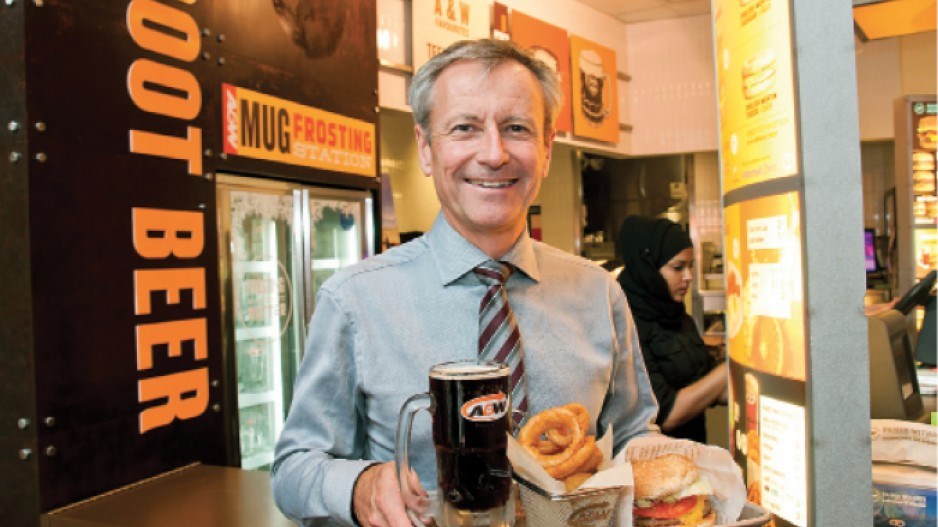Protecting and promoting a restaurant brand is challenging enough when owners have trademarked the corporate name and have complete control over operations. It becomes a lot more perilous when a same-named restaurant chain operates in a nearby territory.
Imagine a public relations nightmare such as an accidental outbreak of salmonella at one of the companies. Sloppy operations at one of the restaurant chains could hurt the other. In an era of peer review websites and social media, it doesn’t take much to damage an established brand.
Two companies on Business in Vancouver’s Top 100 Private Companies in B.C. list – A&W Food Services of Canada Inc. and the Old Spaghetti Factory – are Vancouver-based restaurant chains that have chains with the same name based in the U.S. yet have a different ownership structure north of the border.
Fortunately, neither brand has had to suffer through a public relations nightmare caused by their namesake. Both have had amicable relations with their same-named counterparts for decades.
The Old Spaghetti Factory’s origins in this country go back to 1970, when a divorce chilled relations between two families and prompted an unwritten agreement that one would operate in the U.S. whereas the other would operate in Canada.
A&W’s separate identities stem from 1956, when entrepreneur Dick Bolte brought the U.S. brand to Canada and opened a string of successful restaurants. He then did something that A&W president Paul Hollands is convinced “would never happen anymore.”
Bolte bought the A&W trademark outright for Canada – “lock, stock and barrel,” according to Hollands.
That meant that Bolte could create his own menu items and market the A&W brand as he wished.
Restaurant industry consultant Darren Tristano, who is executive vice-president of Technomic Inc., says this kind of arrangement happens more than people might think.
He pointed to Michigan-based Big Boy Restaurants, which sold the trademark to its brand in four states to an outside ownership group. Its brand is now known as Frisch’s Big Boy in Kentucky, Indiana, Tennessee and much of Ohio – leading to much market confusion, Tristano said.
“It’s the same icon and the same kind of restaurant,” Tristano said of the two Big Boys.
He pointed out another situation, in which two separate Chicago-based restaurant chains are named Rosati’s Pizza. One is a franchisor with nearly 150 locations countrywide. The other chain is much smaller yet shares an identical logo despite being owned and operated by a different arm of the same family, Tristano said.
Sometimes two same-named brands can operate for decades without so much as a contract.
The Old Spaghetti Factory’s president in Canada, Peter Buckley, told BIV that he has never seen a legal agreement with the namesake company in the U.S.
Given that it has been 45 years since four Pulos brothers opened their first Old Spaghetti Factory in Gastown in March 1970, it would be impossible for the U.S. namesake company to suddenly claim trademark infringement, Buckley added.
He said that he has intermittent cordial chats with executives at the U.S. version of the pasta chain, but conversations always stay clear of topics such as recipes or marketing ideas.
There can even be a mutual benefit from having same-branded chains of spaghetti restaurants on either side of the border, in that U.S. and Canadian customers making cross-border trips, and who have a positive view of the brand, don’t usually know or care that there is a separate ownership structure, he said.
“We do not go out of our way [to make it clear that the ownership is different in Canada],” he said. “There’s nothing on any of our menus that suggest we’re not affiliated with the U.S. company.”
The strategy seems to be working.
Buckley said the Old Spaghetti Factory’s annual revenue growth is running at about 7% so far this year, primarily because of increased visits, not rising prices. •




